Austin Hodge
I started Seven Cups in 2002.
https://www.linkedin.com/in/austin-hodge-ab5258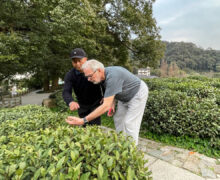
All my life, whenever I’ve had a little patch of dirt available to me, I’ve been a gardener. If somebody ever asks me why I have a garden, I’ll tell them it is to grow tomatoes. As I’ve learned more about tomatoes, I’ve discovered types of tomatoes that you can’t buy in the store because… // MORE
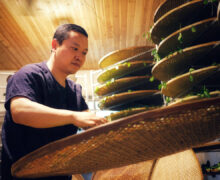
In Tong Mu Village, high up in the Wuyi Mountain range, Wu Jianming is weeding his tea garden. We know this because we called his wife and she told us he’d be gone all week with his hands in the dirt. It’s the seventh Lunar month of the old agricultural calendar, there. In Tucson, it’s… // MORE
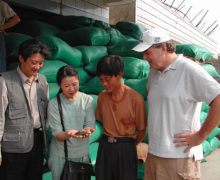
My first experience with puer tea came in an alley outside the Victoria Hotel on Shamian Island surrounded by the Pearl River in Guangzhou China on a fall morning in 2002. I had just registered my business in Tucson, Arizona and was in Guangzhou looking for tea. I was having dim sum. I was… // MORE
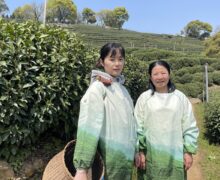
The success of Seven Cups fine tea over the last couple of decades for the large part can be attributed to “direct sourcing.” It is one of our core values. For us, it gives us the ability to focus on quality. For the tea maker, there is direct exposure to the market. For the… // MORE
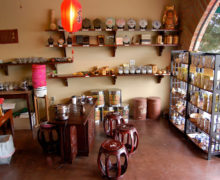
This new year is the year of the water tiger. It will be a year full of challenges and changes that will take courage, curiosity, spontaneity to solve. That sounds pretty good to me. It also marks twenty years that Seven Cups Tea has been in business, twenty-one years if you count the year I… // MORE
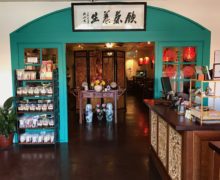
With the holidays’ approach, I’m filled with sadness that our teahouse continues to be closed for service. It looks as if that may be the case for the rest of the year. The first year we were open was also challenging, but December filled us with hope for the future.
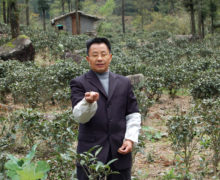
Chinese black tea spread to every continent around the world to become the most popular beverage next to water before it was noticed by Chinese tea drinkers. It was always considered damaged tea until the 21st-century tea renaissance. Chinese are drinking black tea for the first time. The quality of the tea being produced now… // MORE
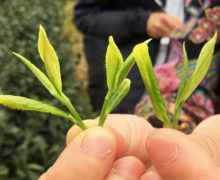
The best of the Chinese green teas have arrived in Tucson. Spring is always an exciting time for us. We love green tea, and as a category, it is our best seller. Along with our green tea, our best yellow and white teas are also arriving. This year has given us a chance to validate… // MORE
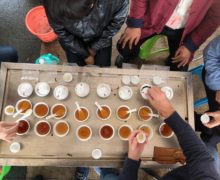
Trade War With China From the beginning of American history China has been an important trading partner. One of the causes of the American Revolution was the monopoly of the East India Company that made it illegal for us to trade with China directly. Tea was the key element in that trade, helping to make… // MORE

Puer tea, a 21st century phenomenon, is going to take a big hit in 2019. Climate change has had a direct impact on the quantity and quality of puer tea. 2019 has been especially bad.
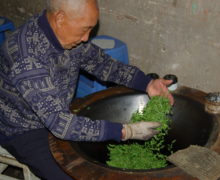
Shi Feng Long Jing Spring teas arriving brings a lot of joy to our little warehouse in the desert. It is bittersweet this year because of the passing of Weng Shang Yi, the maker of our Shifeng Longjing. He lived to be 90 years old. He started making Longjing when he was fourteen, 1943. During… // MORE
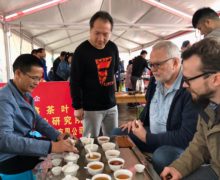
After 17 years of bringing specialty tea to Tucson from China, I am amazed to still be here sitting at my desk at Seven Cups. It’s been a while now since I have written a blog post, and remarkably I have not been fired. The new year is upon us, and having recently… // MORE

Where the Indentation in a Puer Cake Comes From This brief under-two-minute educational video is packed with information. If you’ve ever wondered how puer tea cakes are made or just where that funny indentation comes from, then take a couple minutes to watch this video. The video takes off from the point where mao cha… // MORE
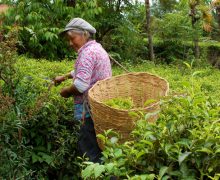
[activecampaign form=4]
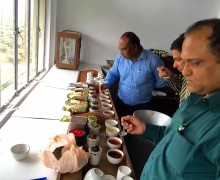
Paradoxically, taste is both the least important and most important elementwhen it comes to establishing the quality of a specialty tea. Taste is the least important element in that taste is, after all, dependent on the individual. What tastes bad to some tastes good to others.
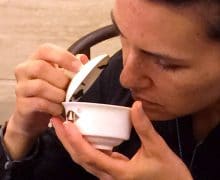
Tea Aroma as a Standard for Specialty Tea This post is part of a continuing series of writings by Seven Cups founder, Austin Hodge, for the International Specialty Tea Association. The aim of this series is to detail twelve elements that can be used to authenticate and value specialty tea. The previous post on tea color as a… // MORE
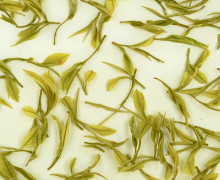
Tea Color as a Standard for Specialty Tea This post is part of a continuing series of writings by Seven Cups founder, Austin Hodge, for the International Specialty Tea Association. The aim of this series is to detail twelve elements that can be used to authenticate and value specialty tea. The previous post, the impact the percentage… // MORE
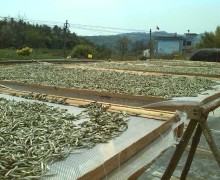
The Percentage of Moisture Remaining as a Standard For Specialty Tea This post is part of a continuing series of writings by Seven Cups founder, Austin Hodge, for the International Specialty Tea Association. The aim of this series is to detail twelve elements that can be used to authenticate and value specialty tea. The previous post on how… // MORE
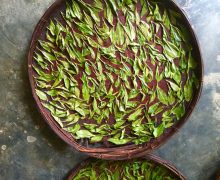
Processing as a Standard For Specialty Tea This post is part of a continuing series of writings by Seven Cups founder, Austin Hodge, for the International Specialty Tea Association. The aim of this series is to detail twelve elements that can be used to authenticate and value specialty tea. The previous post on the tea master as… // MORE

Tea Maker as a Standard For Specialty Tea This post is part of a continuing series of writings by Seven Cups founder, Austin Hodge, for the International Specialty Tea Association. The aim of this series is to detail twelve elements that can be used to authenticate and value specialty tea. The previous post on the impact of the… // MORE
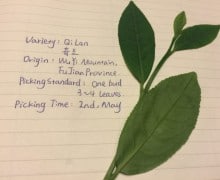
Tea Cultivar as a Standard For Specialty Tea This post is part of a continuing series of writings by Seven Cups founder, Austin Hodge, for the International Specialty Tea Association. The aim of this series is to detail twelve elements that can be used to authenticate and value specialty tea. The previous post on the impact of the… // MORE
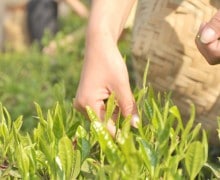
Harvest Date as a Standard For Specialty Tea This post is part of a continuing series of writings by Seven Cups founder, Austin Hodge, for the International Specialty Tea Association. The aim of this series is to detail twelve elements that can be used to authenticate and value specialty tea. The previous post on how the environmental conditions… // MORE
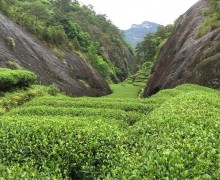
The Origin as a Standard For Specialty Tea This post is part of a continuing series of writings by Seven Cups founder, Austin Hodge, for the International Specialty Tea Association. The aim of this series is to detail twelve elements that can be used to authenticate and value specialty tea. The previous post, on plucking and leaf… // MORE
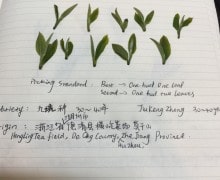
Plucking and Leaf Uniformity as a Standard of Tea This post is part of a continuing series of writings by Seven Cups founder, Austin Hodge, for the International Specialty Tea Association. The aim of this series is to detail twelve elements that can be used to authenticate and value specialty tea. The previous post, on how the… // MORE
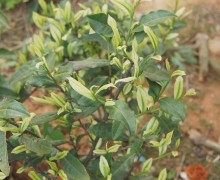
The Leaf As a Standard for Specialty Tea The first element in evaluating quality in specialty tea is the finished tea leaf. The examination of the leaf tells many stories. With few exceptions, a well-processed tea leaf should be completely intact, unbroken, pristine, with wulongs being one of the exceptions. This element is the first to… // MORE
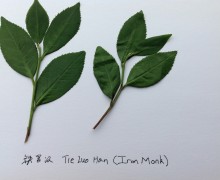
The Tea Industry and its Misuse of the Term “Quality Tea” There is no definition for specialty tea. The dictionary defines specialty as “ a product of a special kind or of special excellence”. The tea industry uses the word as a descriptor for tea that has no relationship to quality. The tea industry uses… // MORE
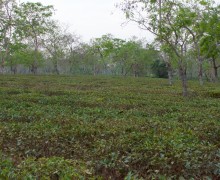
Assam is the tea-growing region that can best benefit from establishing quality standards. Known as the world’s largest tea producing region for its commodity tea, it may be hard to imagine that Assam is capable of making some of the best tea in the world.
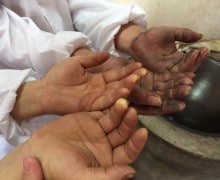
Standards for excellence would give tea makers a goal to shoot for while giving buyers and consumers the tools to determine whether or not makers had reached that goal.
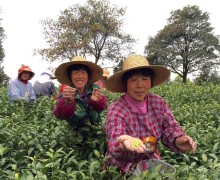
‘Specialty Tea.’ must be defined to establish value and give meaning to the term.
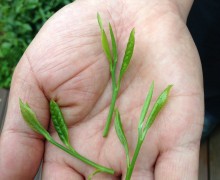
Speciality Tea has never been defined nor have standards for quality ever been established. Now’s the time to do it.